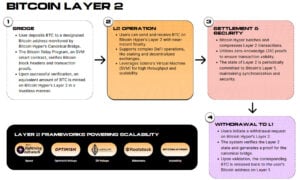Best Crypto To Buy Now: Pepeto vs BlockDAG, Layer Brett, Remittix, Little Pepe, Compared
Today we compare Pepeto (PEPETO), BlockDAG, Layer Brett, Remittix, Little Pepe (and how they stack up today) by the main things that matter: the team’s vision and commitment, what is live right now, independent audits, tokenomics clarity, and real utility. You will see where DEX and bridge delivery exists, which Layer 2 claims hold water, who has PayFi rails, staking, and listing readiness, so your choice for the best crypto to buy now is based on facts, rather than hype.
Pepeto, The Meme Coin on Ethereum, Built To Revolutionize The Memecoins Market
As unlike old memecoins that rode pure hype at launch, Pepeto is built like a project with a mission. The team treats this as legacy work, shipping fast, polishing details, showing up for the community, and pushing forward every week.
Where earlier cycles wrote the first chapters, Pepeto aims for the full package, a hard capped design, including PepetoSwap, a zero-fee exchange where every trade runs through the Pepeto token, guaranteeing real usage instead of artificial buzz. Already 850+ projects have applied to list, a strong signal for future volume. A built-in cross-chain bridge adds smart routing that unifies liquidity, cuts extra hops, reduces slippage, and turns usage into steady token demand, Because every swap touches the PEPETO token, making it very hard for the coin’s price not to rise aggressively in the coming years.
In addition to that, it’s audited by independent experts, both Solidproof and Coinsult, which explains Investors trust, we can clearly see as more than $6,7 Million already raised in presale.

The presale puts early investors at the front of the line, with staking and stage based price increases, and early traction suggests that line is getting long. That is the edge, utility plus purpose, culture plus tools, set to run farther than hype can carry.
What it means: Pepeto is moving from hype to usage, a combo that often drives sustainable runs. If listings land and on-chain activity scales, the setup favors much bigger potential returns than legacy memecoins.
If there is a name ready to outshine the old memecoin class in 2025, and every other presale currently on the market, is Pepeto, this is the one people will brag they spotted before everyone else. No smart investor would miss this opportunity. Buy Pepeto now at the current price of $0.000000153, the lowest Pepeto price you will ever see again, and do not miss this opportunity.
Early SHIB and DOGE buyers made the right decision at the right time, AKA early. Pepeto appears to be at a similar stage now, ready to take off.
Blockdag: Marketing vs Verification: Transparency and On-Chain Proof
Before chasing the next big token, separate what’s shipped from what’s promised. BlockDAG (BDAG) claims “10x upside,” but slogans don’t equal lasting value. Following the BDAG Deployment Event and a pricing reset to $0.0013, the bigger concern is transparency: there’s limited independently verifiable on-chain proof for key metrics, unclear exchange-ready liquidity plans and post-listing unlocks, and few public engineering artifacts to review.
The team highlights a DAG-plus–Proof-of-Work design claiming 15,000 TPS, instant payments, smart contracts, and eco-friendly operation, yet independent tests and public code depth remain limited.
Sports tie-ups (Inter Milan, Seattle Seawolves, Seattle Orcas) widen reach via NFTs, but holder utility is unclear, the audit covered a narrow slice, and users report mixed experiences with claims and withdrawals. Confidence requires live releases and transparent, on-chain evidence.
Layer Brett: L2 Pitch Under Review: Fast, Low-Fee Claims
Layer Brett (LBRETT) markets itself as an Ethereum Layer-2 with fast, low-fee transactions, staking, and meme-driven branding, but most coverage so far looks like paid promotion rather than independent reviews.
Headline claims on throughput, fees, and cross-chain support lack third-party benchmarks, and publicly shared code, audits, and real usage are limited. The pitch is catchy; the delivery is unproven, treat it as early-stage and verify audited code, live activity, and listings before committing funds.
Remittix: PayFi Vision: Crypto-to-Bank Rails, Multi-Coin Wallet
Remittix (RTX) review: a PayFi network that says it will route crypto to bank accounts via a wallet supporting 40+ coins, 30+ fiats, and same-day processing.
Still, exchange access looks tentative, licensing/compliance details aren’t clear, the public audit appears limited and the team lacks third-party KYC, while early user ratings are weak. Until live rails, verified licenses and confirmed listings arrive, Remittix carries high execution risk relative to its marketing.
Little pepe, Crowded Layer-2 Solution Field
Little Pepe (LILPEPE) bills itself as a Layer-2 meme coin play: an EVM-compatible network promising low fees, quick confirmations, and a bridge to move assets in and out of its ecosystem. The trouble is differentiation, most L2s make the same claims, and Little Pepe’s materials don’t clearly show what’s novel versus incumbents like Optimism, Arbitrum, or Base.
Without transparent, third-party benchmarks, open documentation of its rollup design and bridge security, or evidence of demand beyond short-term incentives, the proposition looks interchangeable with countless copy-paste L2 launches. Liquidity could fragment, bridge risk remains non-trivial, and any token value would depend on sustained real usage rather than meme momentum.
Until the team ships verifiable tech that’s measurably better, Little Pepe’s Layer-2 pitch reads more generic than groundbreaking.
Final Takeaway
Pepeto feels different. The team is openly chasing two goals at once, fast upside now and staying power after, not a quick pop that fades. You can feel the energy in the way they ship, talk, and show up, the sense that holders are joining a story people will remember in the meme coin market. It speaks to everyone, from big investors looking to diversify into a fresh narrativewith big multiples potential, to small buyers who have been waiting for a shot at life-changing gains, especially those who hesitated on early Shiba and Doge and promised themselves they would not miss the next one.
By contrast, BlockDAG shows fewer live releases and limited on-chain proof so far, Layer Brett coverage leans promotional with few independent benchmarks, Remittix still needs clearer licensing and listing visibility, and Little Pepe has a Layer-2 story that is not yet well differentiated from established rollups. For anyone asking the simple question, best crypto to buy now, Pepeto stands out on execution, transparency, and intent: a meme coin built to break out fast and keep running. Keep in mind, today’s Pepeto price is the lowest you will ever see, analysts call this as the best crypto to buy now, and the opportunity that nobody should miss.
Pepeto Media Links :
This publication is sponsored. Coindoo does not endorse or assume responsibility for the content, accuracy, quality, advertising, products, or any other materials on this page. Readers are encouraged to conduct their own research before engaging in any cryptocurrency-related actions. Coindoo will not be liable, directly or indirectly, for any damages or losses resulting from the use of or reliance on any content, goods, or services mentioned. Always do your own research.
The post Best Crypto To Buy Now: Pepeto vs BlockDAG, Layer Brett, Remittix, Little Pepe, Compared appeared first on Coindoo.
You May Also Like

Mastercard Goes All Into Web3 Via Acquisition of Zerohash for Nearly $2B

Bitcoin Hyper Coin Review 2025 — Is it Safe to Invest in? Everything You Need to Know

